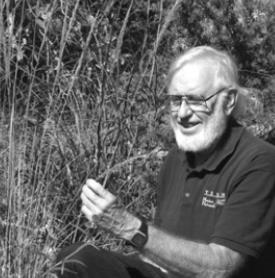Changes in the Condition of the Earth During One Man’s Lifetime
The first part of David Attenborough’s book, “A Life on Ou Planet,” consists of a number o sub-sections based on what wa going on in Attenborough’s life at that time. The first section began in 1937 when he wa an 11-year-old riding his bike around to explore the English countryside and sea shore. The last section is around 2020.
Then, for a number of intermediate years, he collected the relevant data of the Human population, carbon in the atmosphere, and the extent o rainforest destruction.
In 1937, the World Population was 2.3 billion, the atmospheric carbon concentration was 280 ppm and the remaining wilderness was 66%.
In 1954 these numbers were 2.7 billion, 310 ppm and 64%
In 1960 they were: 3.0 billion, 315 ppm and 62%.
In 1968 they were: 3.5 billion, 323 ppm and 59%.
In 1971 they were: 3.7 billion, 326 ppm and 58%.
In 1978 they were: 4.3 billion, 335 ppm and 55%.
In 1989 they were: 5.1 billion, 353 ppm and 49%.
In 1997 they were: 5.9 billion, 360 ppm and 46%.
In 2011 they were: 7.0 billion, 391 ppm and 39%.
In 2020 they were: 7.8 billion, 415 ppm and 35%.
So, in the 83 years covered and the condition of the earth observed by Attenborough above the human population has more than tripled, the atmospheric carbon has almost doubled and the amount of wilderness lef has almost halved.
Attenborough has a way o describing things in the simplest, but accurate terms. Fo instance: he says, “We canno continue to cut down the rainforest forever, and anything that we can’t do forever is, by definition, unsustainable. If we do things that are unsustainable, the damage accumulates to a point when ultimately the whole system collapses.”
I found just the statement, “Anything that we can’t do forever is, by definition, unsustainable” a rather jolting thought. Just because we have perhaps been doing certain things for as long as we can remember, doesn’t mean we can continue to do so, and that attempting to do so may have deleterious consequences in the future.
So just look at that list of dates and pick out the one just before or after you were born and you can follow the changes that have occurred, so far, in YOUR lifetime. Then extrapolate the curve of changes in your life as far as you hope for you or, better, your kids, to live. What do you think might be the deleterious consequences of such sustained activity?
If global conditions are hard for you to identify with, then think about the consequences of increased human population in the Hill Country. What about the increased demand for new roads, hospitals, schools, traffic, WATER?
And then think about the effects of changes not just in the Hill Country, but throughout the country and the world?
I don’t mean to leave you with too gloomy a picture of the future, because Attenborough didn’t paint such a picture. In fact, much of his book details solutions to most of these problems in a way that leads to humans still having a high standard of living. One that is probably better than most people have now. Will it mean we have to change a number of the things we do and/or how we do them, and will it take some time? Yes of course it will, but the good news is that we have the time to make the changes as long as we take things seriously and “do the right thing,” as long as we do it with deliberate speed.
Some of the changes in the way we do things have already begun, like driving cars with better gas mileage, like using renewable energy, like capturing rainwater, like recycling. Some of these things we could do more effectively or efficiently, and we are getting better at it all the time. Some changes are not clearly in the hands of individuals, but of industry, business and government, and certainly more could be done sooner. But it is a start, and we don’t have to do everything at once, but we do have to, collectively, increasingly do more, quicker.
Much of Attenborough’s book is devoted to discussing all of this in detail. I urge everyone at all interested in the future of our planet to buy this book, “A Life on Our Planet.” I will try, over the next few weeks or so, to summarize much of the thoughts and ideas of his book in future columns.
Until next time…
Jim Stanley is a Texas Master Naturalist and the author of the books “Hill Country Ecology,” “Hill Country Landowner’s Guide” and “A Beginner’s Handbook for Rural Texas Landowners.” He can be reached at <jstmn@ktc.com>. Previous columns can be seen at <www.hillcountrynaturalist.org>.

